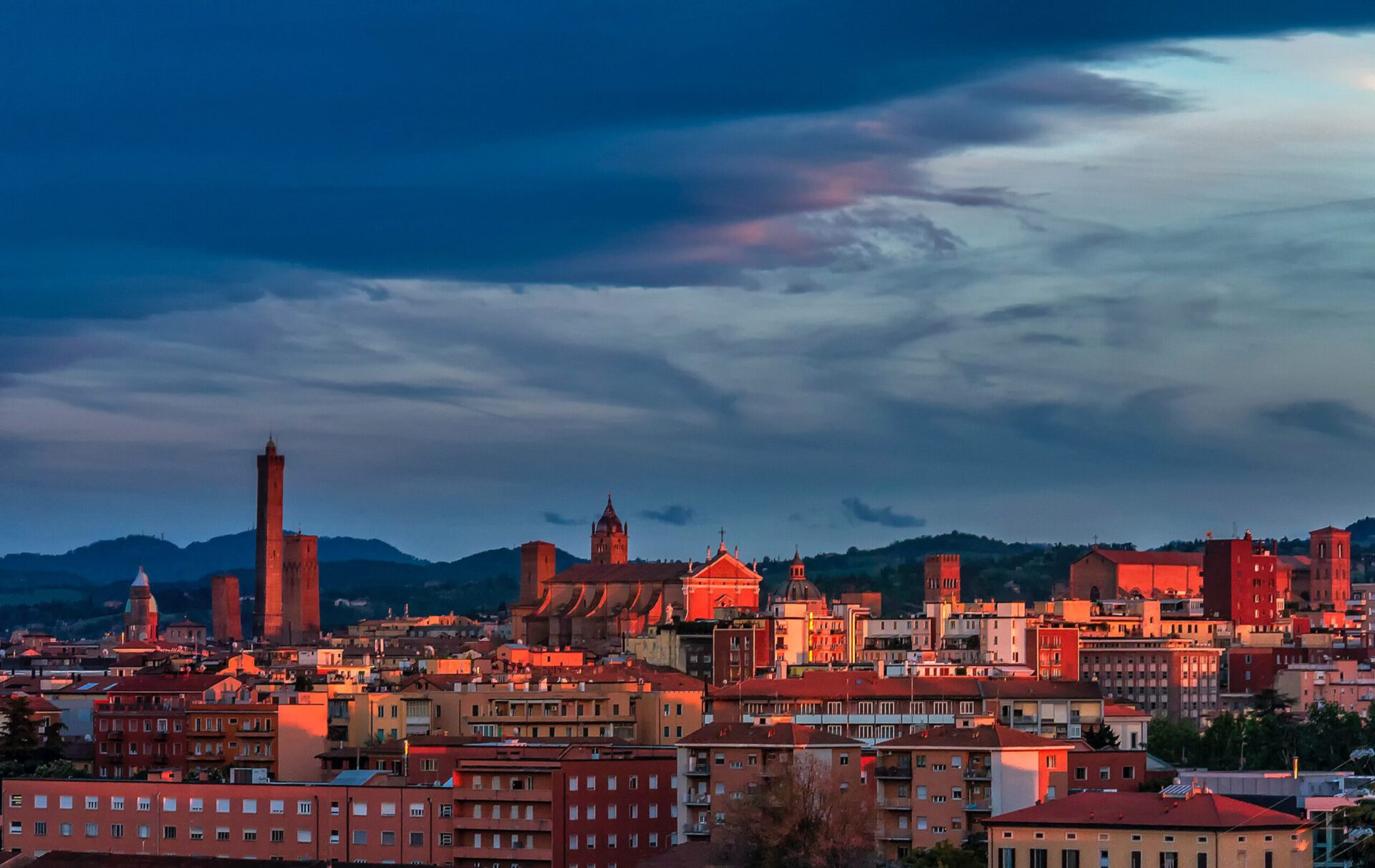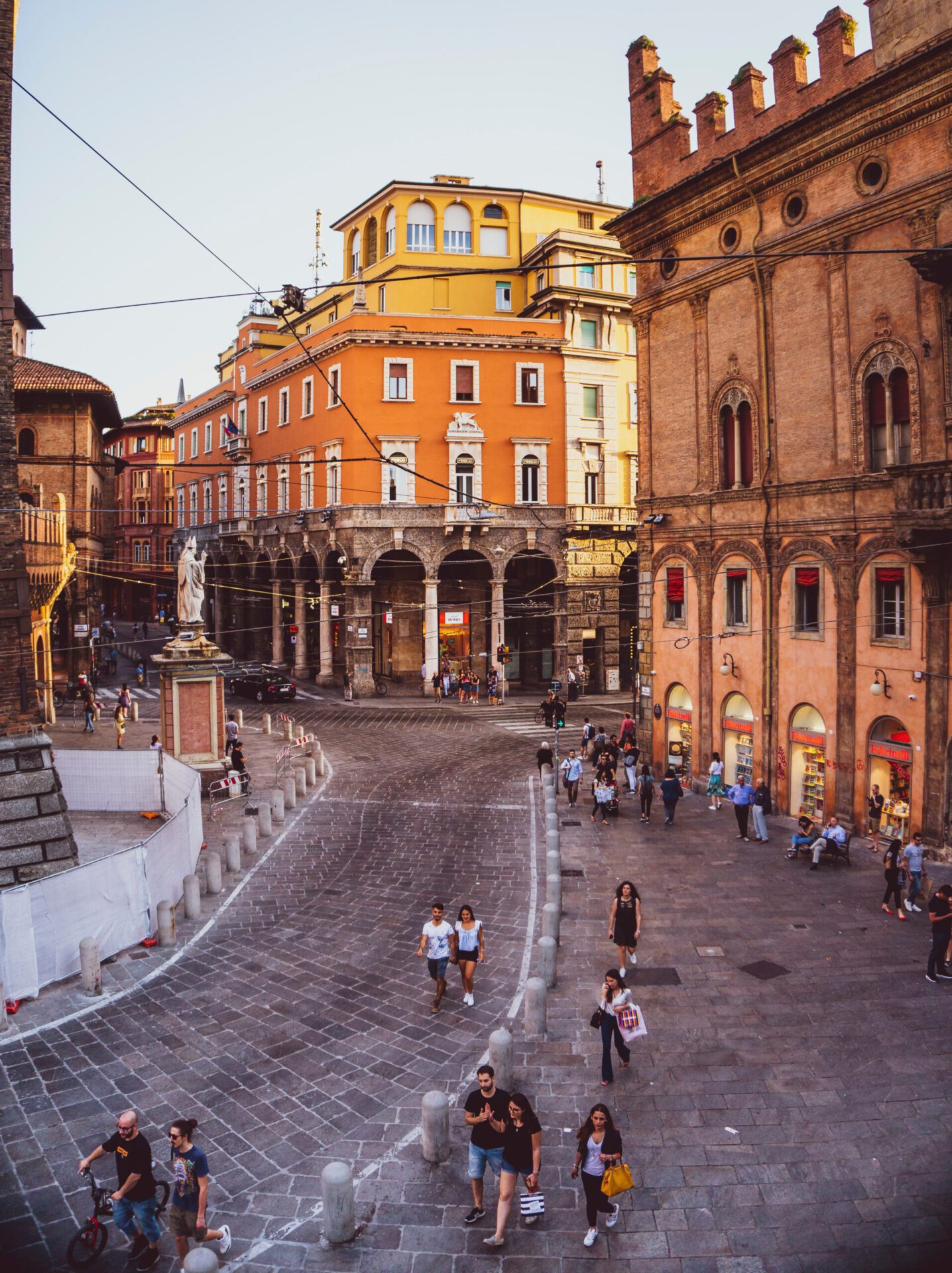Some cities are missed like people, those you think back to with a smile as your heart warms up; Bologna is easily one of them. It is so for those who have lived there like me, but also for those who have only spent a few hours or a few days in the sun, perhaps on a Saturday at the Montagnola market. And it is not only for its excellent cuisine, its trattorias, its porticoes, its parties in the squares and the hills all around, for the big smiles and the soft accents of its inhabitants, but also for its unique character that oscillates between that of a “posh lady” and the most irreverent and revolutionary student.
Bologna is like a friend, one of those who puts on an evening gown, comes with you to a premiere and the next day sits on the pavement eating pizza with a beer in her hand. Bologna knows how to be elegant and noble as well as spontaneous and direct. It has always been a non-conformist and pleasure-loving city, and this is why it’s gained the nickname “la dotta, la grassa, la rossa”. Bologna is “la dotta” (the erudite) because it’s home to the oldest university in Europe, which dates back to 1088, among others. It’s also “la grassa” (the fat) for its trattorias and “la rossa” (the red) for the colour of its buildings (alternatively, for its past communist leanings).
Every corner, too, is steeped in history: there are arrows stuck from the Middle Ages in the wooden ceiling of the porticoes of Palazzo Isolani, there are the remains of a 2nd-century BC basilica under the glass floors of Sala Borsa, inside the ancient Palazzo d’Accursio. There are palaces, such as the Archiginnasio, where the history of university teaching is encapsulated, or churches such as the Basilica of Santo Stefano which houses seven others from different eras.

In Bologna, you don’t need an umbrella because the 38 kilometres of porticos protect you. You can get around Bologna by bike because everything is 20 minutes away. The city’s urban planning ensures continuity and that no one, not even the most significant noble palace, can isolate itself and stand out from the others. In Bologna, the Middle Ages go hand in hand with the Renaissance while winking at the remains of the Roman era. The illustrious figures of history who have walked along its avenues, under its porticoes, in its squares, have been artists, poets, scholars, singers, jurists, and architects. And so when you stroll through Piazza Cavour (the Piazza Grande, as sung by Lucio Dalla), when you queue up at the Osteria dell’Orsa to eat the best-fried gnocco in town, or at Vito’s for lasagne and pork shin in the hope of meeting Guccini, when you have just ordered a coffee at the Bar La Linea under the arches of Palazzo Re Enzo, or two squares of pizza at Altero’s in Via Indipendenza, or you are driving on the tangenziale and find your way home thanks to San Luca lit up on the hills, you will know that you belong to this city forever and, like when you think of a friend, you will start to smile.




